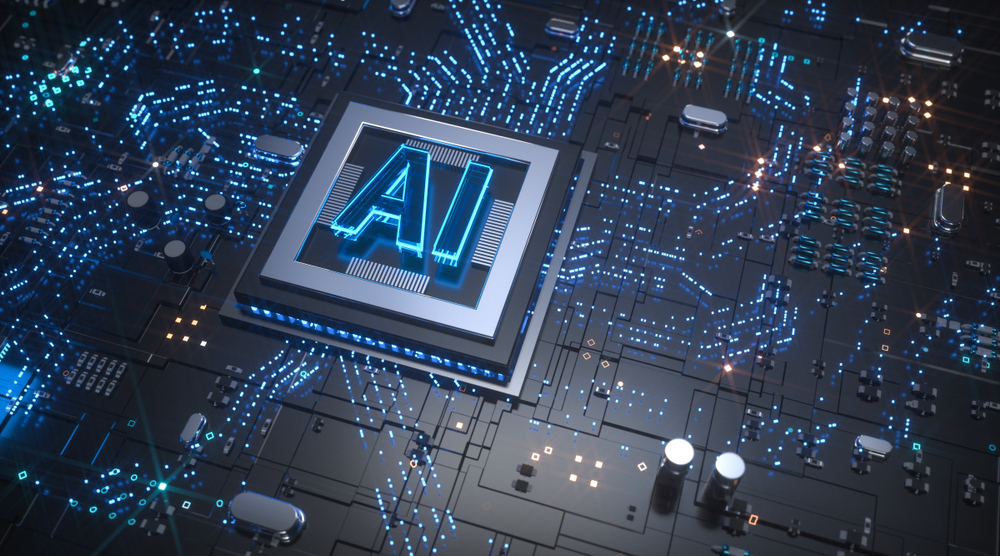Highlights:
- AI chips play a crucial role in enabling edge computing, supporting on-device AI task processing, and minimizing the need for data transfer to distant servers.
- They leverage specialized neural network structures like CNNs and RNNs to enhance the efficiency of neural network calculations, particularly in matrix operations.
In the ever-fluid tech environment, the unassuming yet remarkable “AI chips” orchestrate a compelling yet quietly momentous transformation. They are discreetly redefining the bedrock of computational efficiency, leaving their indelible mark in the most captivating manner.
This expedition welcomes you to set sail on an enthralling odyssey through the intricate cosmos of AI chips, where we will unveil their diverse types, venture deep into the substantial advantages they confer, and unearth the subtle yet indisputable distinction that propels them beyond the realm of traditional chips. Let’s begin with a quick overview of artificial intelligence chips before delving deeper into the subject.
AI Chip At a Glance
In this concise exploration, we’ll provide a quick and insightful overview of artificial intelligence chips, shedding light on their pivotal role in AI and their unique features.
- AI chips, with their hardware architecture and supporting technologies, empower the infusion of AI into diverse applications, converting data into valuable knowledge.
- They are increasingly employed in NLP applications to meet the rising demand from chatbots and online platforms like Messenger and Slack, which rely on NLP to analyze user messages and conversations.
- They are pivotal in IoT, enabling localized data processing in smart devices. This bolsters operational efficiency and reinforces security measures within IoT ecosystems.
- NVIDIA, Intel, and AMD are industry leaders in the AI chip market, consistently pioneering innovative AI chip technologies.
- They are essential for edge computing, facilitating local AI task execution, and reducing data transmission to remote servers.
Exploring the nuances of an artificial intelligence chip provides the foundational knowledge needed to delve into the compelling reasons why AI chips outshine traditional chips in the ever-evolving landscape of computing and technology.
Why AI Chips Outshine Traditional Chips in the Digital Era?
AI and conventional chips are distinct in various aspects, each tailored to specific applications and computing needs.
Here’s a comparative analysis of their key differences:
AI chips
- Design focus: AI chips are tailor-made for efficient computing power, low energy consumption, and specific AI applications like machine learning and deep learning.
- Architecture: They employ dedicated neural network architectures, such as CNNs and RNNs, for efficient neural network computations like matrix operations.
- Computing power: They offer efficient computing via dedicated hardware accelerators like GPUs and NPUs. These accelerators handle parallel large-scale matrix operations, expediting neural network training and inference.
- High bandwidth memory: Specialized AI hardware dedicates 4-5 times more bandwidth than conventional chips, crucial for efficient parallel processing in AI applications.
- Energy efficiency: They balance high computing power with low energy consumption thanks to their specialized neural network architecture, optimizing resource utilization and minimizing energy wastage.
- Flexibility: AI chips are highly optimized for neural network computations and offer exceptional adaptability and prowess in managing intricate AI tasks.
Traditional chips
- Design focus: They prioritize general-purpose computing, emphasizing performance, power efficiency, and programmability. They follow the von Neumann architecture, encompassing CPU, memory, and buses.
- Architecture: They employ general-purpose architectures, like von Neumann, which are versatile but inefficient for complex AI computations.
- Computing power: They rely primarily on CPU performance indicators like clock frequency and core count. However, for demanding AI tasks, their performance is constrained.
- Energy efficiency: Traditional chips, with their high performance, also exhibit relatively high power consumption due to energy inefficiency in handling AI tasks within their general-purpose architecture.
- Flexibility: They are programmable and versatile for diverse applications but less adaptable for specific AI tasks.
In this digital era, delving into the various types of AI chips that spearhead this transformative journey is essential.
AI Chips in Focus: Examining the Types
The AI chip landscape encompasses a range of specialized categories, each meticulously engineered to address specific requirements in the realm of artificial intelligence. Prominent types of AI chip comprise:
- Graphics processing unit (GPU): Initially engineered for graphic rendering, GPUs have emerged as potent contenders in the realm of AI computing. Their exceptional parallel processing prowess has propelled them to the forefront of accelerating AI computing tasks. Notably, NVIDIA’s GPU offerings, including the Tesla and GeForce series, have garnered widespread adoption and acclaim in the field of AI computing.
- Application-specific integrated circuit (ASIC): ASIC represents a tailored, purpose-built chip meticulously optimized for a precise application. In the domain of AI, ASIC chips have garnered notable recognition, exemplified by Google’s Tensor Processing Unit (TPU) and Bitmain’s specialized ASIC chips, which demonstrate remarkable efficiency in AI computing tasks.
- Neural processing unit (NPU): The NPU is a chip meticulously crafted for the intricacies of neural network computing. Typically characterized by a profoundly parallel architecture and tailored instruction sets, NPUs excel at expediting the training and inference of neural network models. Prominent NPUs in the market include Huawei’s Kirin NPU and Asus’ Thinker series chips, exemplifying their adeptness in enhancing the performance of neural network tasks.
- Field-programmable gate array (FPGA): FPGA stands as a dynamic hardware platform offering customization options tailored to precise requirements. In the realm of AI computing, FPGA exhibits a remarkable capacity for optimization in alignment with diverse neural network architectures, delivering a unique blend of flexibility and scalability.
It is clear that AI chip types are tailored to meet the specific demands of various AI applications, spanning deep learning, natural language processing, and more. Each category provides distinct benefits derived from its design and functionality.
AI Chips in Action: Realizing Benefits
By synergizing heightened intelligence and swiftness to streamline mundane tasks, AI-driven chip design revolutionizes silicon results and markedly boosts engineering efficiency. AI chip design bestows a plethora of benefits, including:
- Heightens efficiency: In a business landscape where resources are dwindling, and the competition for talent is fierce, engineers often grapple with hefty workloads. AI alleviates this burden by managing repetitive tasks, enabling engineers to direct their efforts toward chip design differentiation, ensuring quality, and adhering to time-to-market objectives.
- Facilitates reusability: AI empowers organizations to retain valuable insights gained from previous projects, allowing them to apply these learnings to subsequent endeavors seamlessly. This practice drives enhanced efficiencies and streamlines the chip development process, ensuring a continuous cycle of improvement and innovation.
- Accelerates design migration: By seamlessly integrating AI, the design migration between process nodes is accelerated, simplifying a once intricate and time-consuming process. This not only fosters increased design process agility and adaptability but also drives efficiency and innovation in chip development.
- Provides parallel processing: AI chips are frequently equipped with multiple cores to enable simultaneous processing of various tasks. This capability is indispensable for handling the demanding workloads inherent in AI applications.
So, AI chips offer a glimpse into their transformative potential, from enhanced processing to improved efficiency, opening new horizons for innovation across diverse industries. Recognizing these AI chip benefits is key to understanding their specific chip types driving AI advancements.
Closing Lines
In summary, AI chip technology is a driving force in the continually evolving technology sector. Our examination of AI chip types, established insights, and their advantages underscores their pivotal role in reshaping the landscape of computational prowess and operational efficiency.
Furthermore, our exploration into the significance of AI chips over traditional counterparts reveals a distinct advantage rooted in their exceptional performance in AI-related workloads and their adaptability for optimization and reconfiguration. While conventional CPUs are proficient in general-purpose computing, AI chips have emerged as specialized workhorses uniquely tailored for dedicated AI tasks.
At last, the journey of AI chips is still unfolding, promising new horizons and uncharted potentials in the ongoing quest for technological innovation.
Expand your knowledge by exploring a variety of informative AI-related whitepapers available in our resource center.





























































